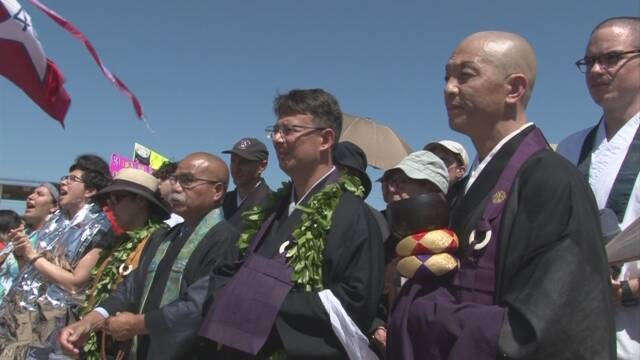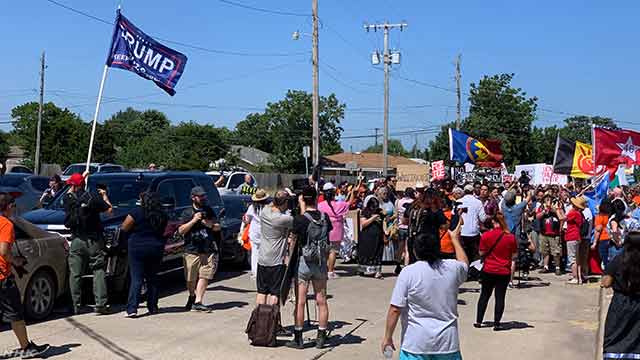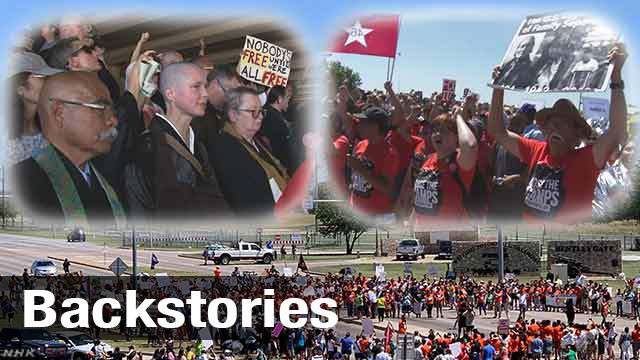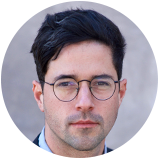Ina was born in the Tule Lake Segregation Center in northern California, a prison camp for Japanese-Americans set up during World War II, when Japan and the United States were waging war against each other in the Pacific.
“My father was taken from us while we were held in a maximum-security prison, and he was removed to Bismarck, North Dakota,” she said. “There was a period of time when we didn’t know where he was, and it would be over a year before we were reunited.”

Ina’s painful experience during WWII inspired her to join other Japanese-Americans in protesting the mistreatment of migrants and refugees under the Trump administration.
2016 campaign promises
Tens of thousands of migrants arrive at the southern border of the US every month, an influx that immigration officials describe as a crisis. In August alone, more than 64,000 people were either detained or turned away by authorities.
Federal law enforcement agencies under Trump have responded to the crisis by arresting hundreds, and targeting thousands, of people who have entered the country illegally. The arrests are part of a broader initiative to secure the southern border, spurred on by Trump’s 2016 campaign promise to build a wall that separates the US from Mexico.
The administration’s enforcement operations have drawn criticism from both political opponents and from within Trump’s own party. The tactics have resulted in “rampant abuses ranging from racial profiling to excessive force,” according to the American Civil Liberties Union.
In July, a group that Satsuki Ina helps organize participated in a demonstration outside Fort Sill, a military base in Oklahoma where the Trump administration was planning to house unaccompanied migrant children.
Hundreds of people from groups representing women, Native Americans, Jews, Japanese-Americans and others gathered at the entrance of the base while chanting, “Close the camps!”

They also blocked highway traffic to show their disapproval of the plan. After the demonstration, the group held a Buddhist ceremony and honored Japanese-Americans who died while imprisoned in the 1940s.
“We’re here because we are concerned about the treatment of migrant children on the southern border,” Duncan Williams, a scholar at the University of Southern California who helped lead the ceremony, said during the protest. “Back in World War II, seven hundred Japanese-Americans were interned here in Oklahoma, and four of them died here.”

The other viewpoint
The Oklahoma demonstration had a few counter-protestors, as well. Oklahoma resident Timothy Harper came sporting a pistol on his hip, which is legally allowed throughout the state, and a red hat bearing the pro-Trump slogan “Keep America Great.”
“I’m here to protest their line of thought,” he said of the demonstrators. “I believe that a country should have respectful borders and that people should go through a process to come into a country.”
While Harper was in the minority at the Fort Sill rally, his anti-immigrant, pro-gun views are common among members of the far-right in the US.

Similar ideas have come to violent fruition during the Trump presidency, notably in El Paso, Texas, where a white nationalist murdered 22 people in August using a rifle after posting an anti-Hispanic manifesto online; and in Pittsburgh, Pennsylvania, where an anti-Semitic gunman murdered 11 people in 2018 at a Jewish synagogue.
“We’re scared now. Hispanics are scared,” said 44-year-old Colombian-born El Paso resident Rachel Barrera, whose younger relative, Javier Amir Rodriguez, was killed in the El Paso shooting.
Standing up for what's right
It’s this fear and social anxiety that Ina’s activism seeks to stamp out. She notes that challenging authority and speaking up to power are distinctively American values.
“Underlying Japanese culture are the qualities of being cooperative and collaborative and not causing conflict, and that was certainly part of my upbringing,” she said.
“But to challenge the government, to challenge higher authority and power is part of the American legacy. So I think we’ve internalized that and our Constitutional right to demand change.”

